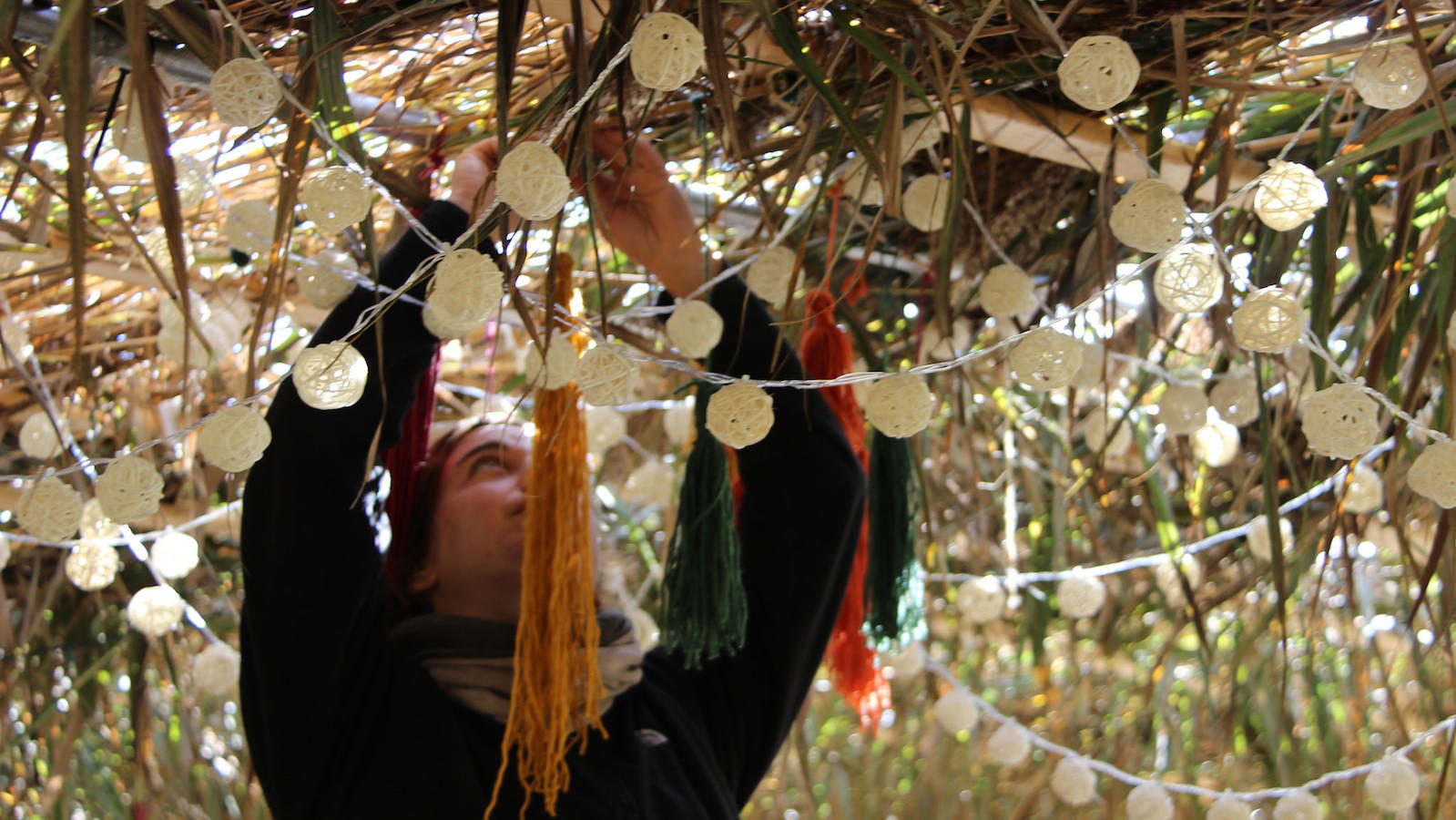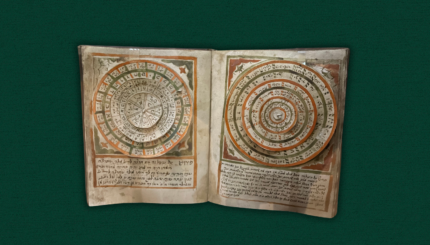The connection of Hoshanah Rabbah to the constellation of the Days of Awe is an ancient one. We find reference to it in Midrash Tehillim, the rabbinic commentary to the Book of Psalms, which stems from the talmudic period and contains material from the early centuries of the common era. Commenting on Psalm 16:11, “Delights are ever [netzakh] in Your right hand,” the Sages interpret netzakh not as “forever,” the common translation, but as “victory,” from the related word, nitzakhon.
They also refer to the ancient custom of placing a wreath of victory in the hands of a winning charioteer. This custom, say the Sages, refers to Israel: On Rosh Hashanah all the nations pass before God as contestants, and their guardian angels declare that they were victorious. However, no one really knows if the victor was Israel or the nations. When Sukkot comes, however, it becomes clear that the people of Israel are indeed victorious, because they “take their festive wreaths in their right hands.” This “festive wreath,” the lulav (the palms together with the myrtle and willow), is read as the wreath of victory. On the seventh day, when the altar is being circled with this “festive wreath,” the angels proclaim, “I bring you good news: at the judgment you are proclaimed victors over the nations” (Midrash Tehillim 17.5).
The custom during the days of the Second Temple was to adorn the altar with specially cut willows and to circle the altar daily carrying willows and chanting the verse, “0 Lord, deliver us” (Ps. 118:25). On the seventh day, they circled it seven times and beat the willows against the altar at the conclusion.The Hebrew for “deliver us” is hoshi’a na, which has been contracted into the word hoshanah. Eventually, the day became known as Hoshana Rabba, the great hoshanah, since, as an accompaniment to the seven processions, special prayers of deliverance, hoshanot, were chanted.
Since Sukkot is the holiday when, according to the tradition, God determines the amount of water (rain) that will descend that year, there is little doubt that this ceremony, together with others held on Sukkot, such as the “waterdrawing festival,” were rites connected with the idea of a fruitful year. How did this ritual become connected with the judgment of human beings? It may be that the phrase “deliver us” was the impetus for reinterpreting this holiday as the day of judgment. What are we asking deliverance from, if not punishment? In the Middle Ages the connection between Hoshanah Rabbahand deliverance from punishment for sin became common and was canonized in the mystical work, the Zohar. Customs grew up of having the leader of the service dress in white, the color of the Days of Awe, and for people to stay awake all night studying and praying in anticipation of the final rendering of the verdict. Thus, the Days of Awe were moved not only backward to the beginning of Elul, but forward to the end of Sukkot as well.
With your help, My Jewish Learning can provide endless opportunities for learning, connection and discovery.
The other connection is perhaps even more important. It is that we are bidden to begin building our sukkah–at least to drive in the first nail‑-upon returning home from the Ne’ilah service. There is no greater contrast in religious feeling than that between Yom Kippur and Sukkot. Yom Kippur is all deprivation, asceticism, and spirituality; Sukkot is all joy, festivity, dancing, singing, and feasting. On Yom Kippur we are in heaven; on Sukkot we are very much on earth‑to our great pleasure. We cannot and should not stay very long in the rarified atmosphere of Yom Kippur. We have to return to earth, to begin to build and make life happy and fruitful, not only for ourselves but for others. If that is the outcome of the Days of Awe, they have been worthwhile.
The call to connect Sukkot with Yom Kippur in this way is symbolic of what Judaism wants us to take away from the Days of Awe. They are not to be isolated, but are to be integrated into a total Jewish life, one that includes celebration and a full relationship with God and with other human beings. In this way, we actualize the Torah’s command, “choose life.”
Excerpted from Entering the High Holy Days. It is reprinted with permission from the Jewish Publication Society.
lulav
Pronounced: LOO-lahv (oo as in boo), Origin: Hebrew, a bundle of branches representing three species -- willow, myrtle and palm -- which are shaken together with the etrog on Sukkot.
Midrash
Pronounced: MIDD-rash, Origin: Hebrew, the process of interpretation by which the rabbis filled in “gaps” found in the Torah.
Ne’ilah
Pronounced: NEE-luh or neh-ee-LAH, Origin: Hebrew, the closing service on Yom Kippur.
Rosh Hashanah
Pronounced: roshe hah-SHAH-nah, also roshe ha-shah-NAH, Origin: Hebrew, the Jewish new year.
Sukkot
Pronounced: sue-KOTE, or SOOH-kuss (oo as in book), Origin: Hebrew, a harvest festival in which Jews eat inside temporary huts, falls in the Jewish month of Tishrei, which usually coincides with September or October.
Tishrei
Pronounced: TISH-ray, Origin: Hebrew, Jewish month, usually coinciding with September-October.
Yom Kippur
Pronounced: yohm KIPP-er, also yohm kee-PORE, Origin: Hebrew, The Day of Atonement, the holiest day on the Jewish calendar and, with Rosh Hashanah, one of the High Holidays.



